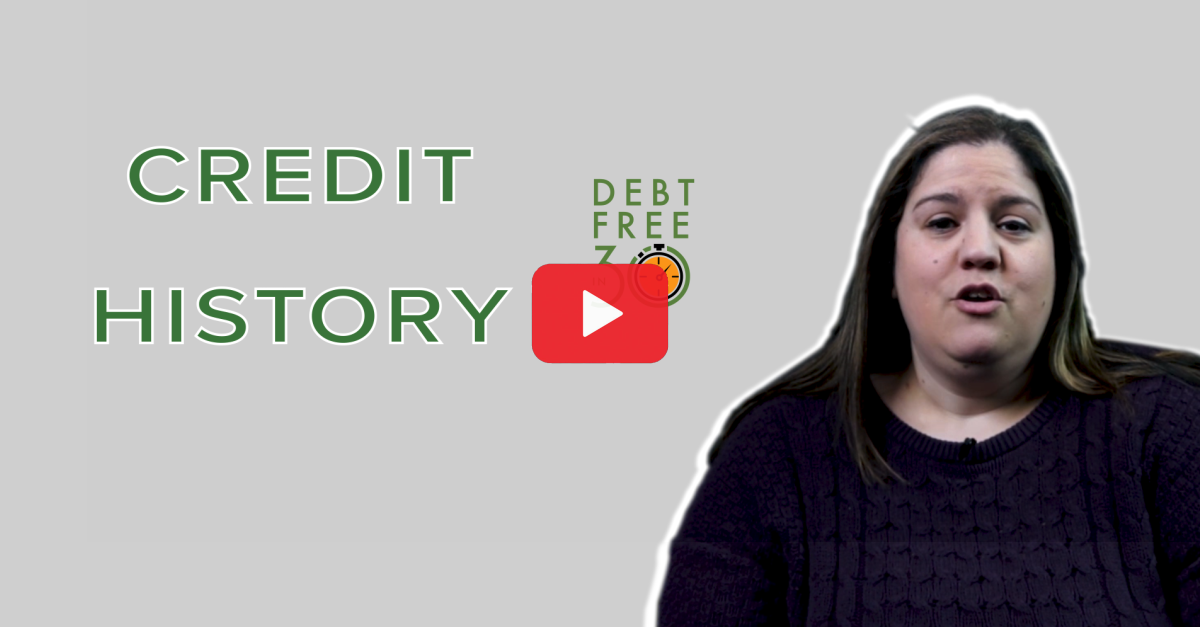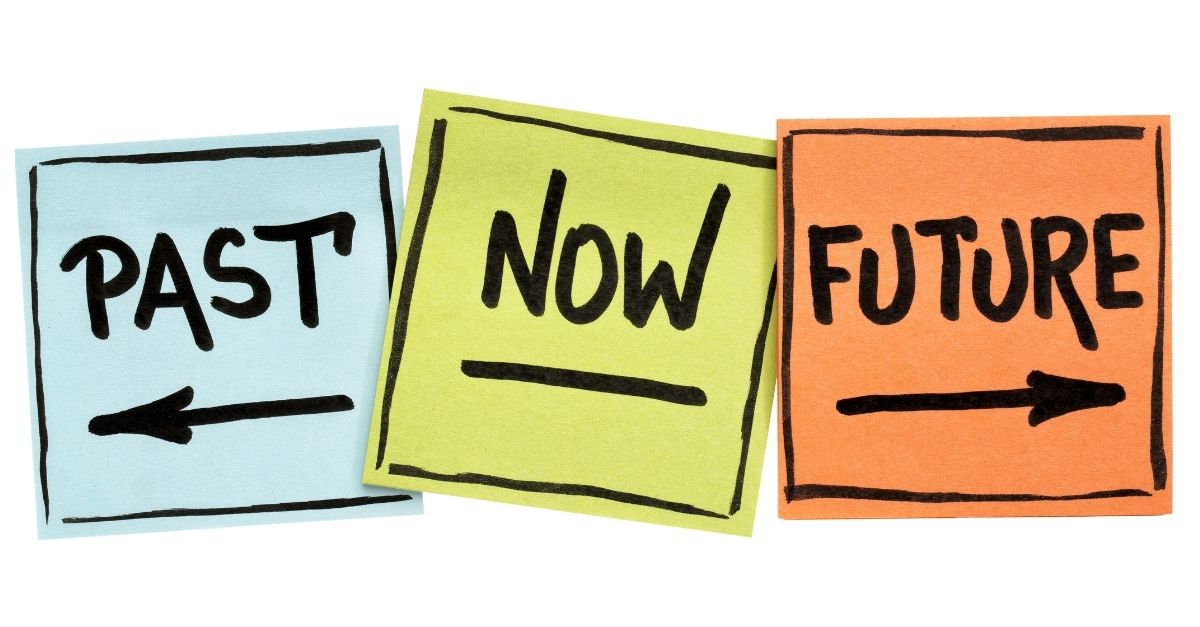
If you carry a credit card or have a cell phone contract, you have a credit history. The more you borrow, the more history you have. Your credit history is more than your credit score and it’s more than just something to worry about when you want to apply for credit; it’s a snapshot of how well you manage your debt.
Table of Contents
What is credit history?

Your credit history is a record of your past and current borrowing activities, including what types of credit accounts you’ve opened, how much you borrowed and your payment history.
Not all your credit history will appear on your credit report. But what does appear has a significant impact on your ability to borrow in the future and the interest rate you will pay.
Your credit history is used by lenders to assess your creditworthiness, decide whether to give you more credit and what interest rate to charge. Landlords look at your credit history to see if you’ll be a good paying tenant. Employers may look at your credit report to fact check your personal information and to see if there is reason to worry about the potential for fraud or theft based on your financial history.
But I think, more importantly, you should look at your credit history as a good barometer of how well you manage your money.
Your credit history is also a timeline. Newer activity has a greater impact on your credit score than old history. This is good if you currently have bad credit or want to rebuild after a bankruptcy or consumer proposal. Filing a bankruptcy or proposal is like drawing a line in the sand. You get a do-over. Your past poor credit habits can fade away as you build a new, better history.
How does your history get on your credit report?
Before a lender is willing to give you money, they check your credit report. Credit reports are a way for lenders to share information amongst one another about how you managed credit in the past. Obviously, this is useful to them. If someone asked to borrow your car, wouldn’t you want to get to know them a bit so you might have a feel for responsible they are? That the initial reasoning behind credit reports.
Canada’s two credit bureaus – Equifax and TransUnion – get information for your credit file from your lenders, and this is where a lot of problems can arise. Not all creditors report to credit bureaus. Some creditors report to both credit reporting agencies; some only report to one, and some don’t report at all. And creditors can make errors, or just be plain stubborn about how they convey information.
Public record information, like a bankruptcy, consumer proposal, judgement or lien, is provided from data available through various local, provincial and federal government records. In the case of a bankruptcy or consumer proposal, it is the Office of the Superintendent of Bankruptcy that updates each reporting agency on the date of filing, type of insolvency proceeding, and discharge or completion date.
Regardless of where the credit bureau gets its information, it’s up to you to check your credit report regularly to ensure this information is correct. It is best to do this with a free credit report available through the credit bureaus rather than one you get through credit monitoring program with your financial institution or lender. Free monitoring services do not show the same information as your lender will see from TransUnion or Equifax.
How does your credit history affect your credit score?
Your credit history is not your credit score, that 3 digit-number everyone loves to chase. I’m not a fan of focusing on credit scores. Worrying about your credit score is like focusing on the number of baskets shot by the top player on the team, yet not focusing on the fact that the team is losing. You could have a good credit score yet still be doing a lousy job managing your money and debt.
According to Equifax, your credit score is calculated based on five factors from your credit history:
- Payments history – 35%
- Credit utilization – 30%
- Length of credit – 15%
- Public records – 10%
- Inquiries – 10%
Payment history has the largest impact on a credit score. If you have a late payment, you can expect a dramatic and immediate drop in your score. The higher your score, the bigger the drop. One late payment, if you have a score of 600, may lower that score 10 to 15 points; if you are at 800, it may fall by 30 points or more.
Overall, the longer you’ve had credit, the better your credit history and the better your credit score. But, even if you’ve had credit for over ten years, if you owe a significant amount of debt, or don’t handle that debt well, you’ll can still have a low credit score.
Maxing out revolving loans like credit cards and lines of credit is very bad for your credit score. Using too much of your credit and maxing out your credit card or lines of credit has an impact almost as bad as a late payment.
That’s why managing your money is really the best thing you can focus on when you want to manage your credit history. Setting priorities, making a budget and tracking expenses, and having a plan means avoiding credit mistakes that can damage your credit report.
How long does your credit history follow you?
What if you’ve had your credit cards for a long time and made some mistakes when you were younger. Will those mistakes show up on your current credit report? It depends.
For the most part, negative history stays on your credit report for seven years. But the duration can be shorter or longer, depending on your behaviour.
The good news is your positive history will show up indefinitely, starting from your very first line of credit. Positive information includes:
- Length of loan (the longer, the better)
- Type of loan (the more diverse your credit lines the better)
- Repayment history (on time)
- Amount of line or amount of credit line (low utilization)
As long as this information is positive, it will continue to keep your credit score high.
So what about a bankruptcy or consumer proposal? People I talk to are very concerned about the impact of bankruptcy on their credit or how long a consumer proposal remains on their report.
While I understand that concern, getting rid of a heavy debt load is often the first step to building a new and better credit history. It’s better to ask yourself a few questions about your credit capacity:
- Am I able to borrow enough now to pay off my debts, at a good interest rate?
- Can I afford my current payments and get out of the debt I have?
Yes, filing a bankruptcy or consumer proposal will appear in the public record section of your credit report and can drop your score in the short term by 100 points or more. However, your score will improve if you take the right steps to rebuild your credit history, despite this initial big hit.
How to manage your credit history
Credit history is the big picture: how well you manage the credit you have. If you have a bad history, it’s time to turn the page and refresh that with a new one. Even a bankruptcy or proposal can be considered the start of a do-over.
New history is more important than old history when applying for credit. This is good news if you are working to repair or rebuild the damage caused by bad credit history.
If your past credit history is not the best, there are things you can do to improve your credit history.
- Get a copy of your credit report and fix any errors.
- If you have a lot of debt, reduce your credit utilization by paying down balances. Less outstanding debt is better for both your credit score and your budget.
- Don’t take on more debt than you can afford to pay. It doesn’t matter how much credit the bank will give you, only borrow what you can afford to pay down. Accepting credit limit increases can lower your utilization rate, but only if you are not tempted to use that new limit for spending.
- Pay your bills on time, so you avoid further negative marks.
- Keep your borrowing balance at less than 50% of your available credit at all times, even mid-month. If you want to use your credit card for all your purchases to earn points, make multiple micro-payments throughout the month to keep the balance low.
- If you are new to credit or are restarting after a consumer proposal, slowly establish new credit lines. You can start with a secured credit card or low balance unsecured credit card.
- Be aware that high-risk credit like payday loans, credit repair loans and financing company loans on your credit report may not look good to a mortgage or traditional lender.
Apply for credit wisely, don’t run up your balances, keep your new accounts in good standing, and you will have a good credit history. If you’ve made mistakes in the past, think of the process as rebuilding your reputation. Forget the past and work to show you’ve changed. If you have really bad credit, the process takes time, but it’s certainly doable.






